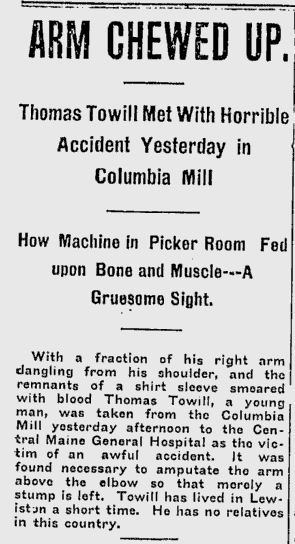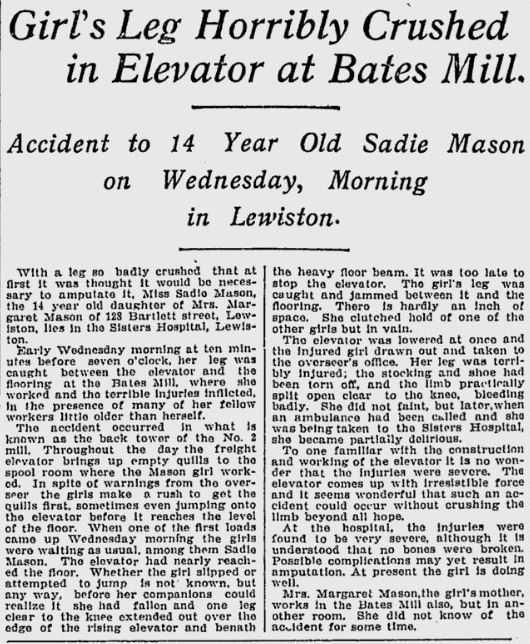Learn
Child Labor
Child labor is the use of children in industry or business. Generally we use the term when talking about the illegal abuses and exploitation of children through any form of work that deprives them of their childhood, interferes with their ability to attend regular school, and is mentally, physically, socially, or morally harmful. Historically, the use of child labor was widely encouraged by industrial development, agreed to by parents and guardians, and generally ignored by the government.
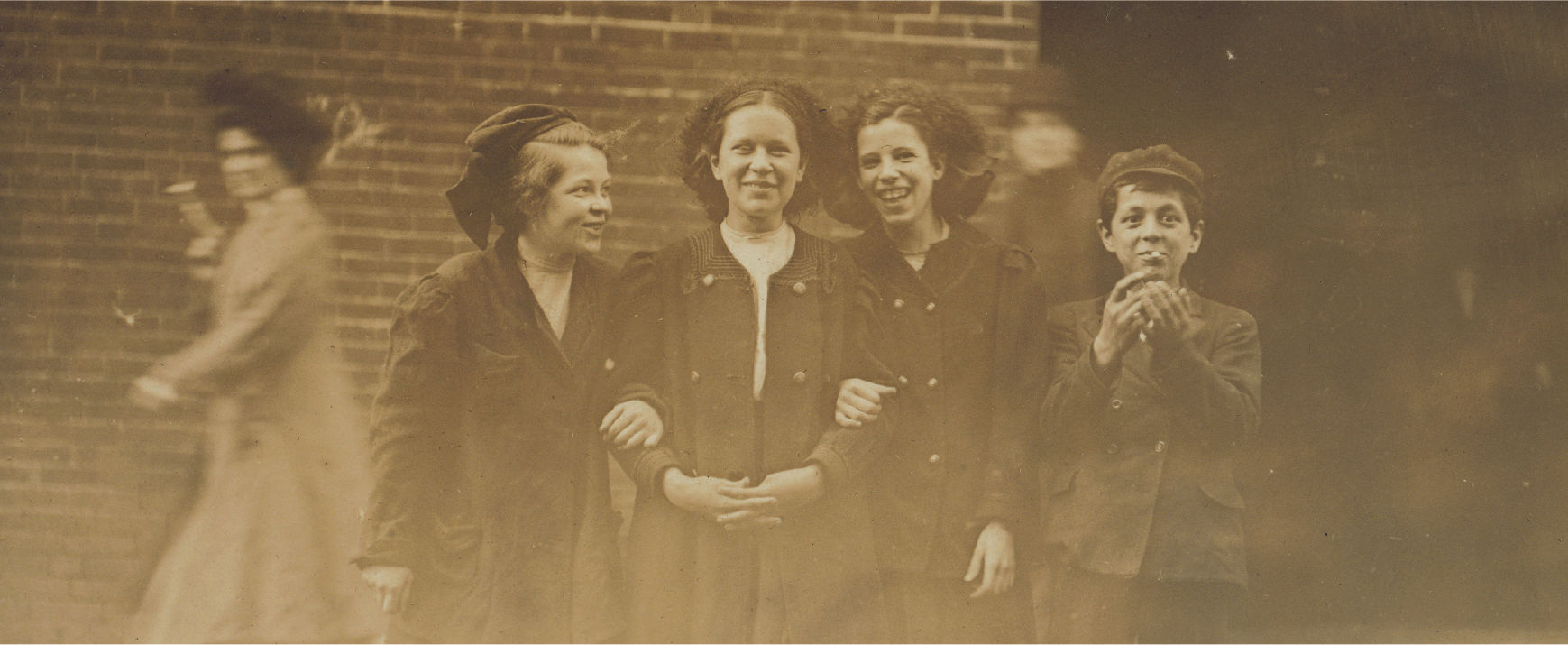
A Brief History of Child Labor in the US
Although children have always worked in some form or another throughout time, the Industrial Revolution made the need for low-skilled labor grow, which in turn made employers look to children. The 1870 census reported that one out of every eight children was employed and by 1900 the rate increased to more than one in five across the United States.
Age was only one of the considerations when deciding if a child was ready to join the workforce. Often parents would evaluate their capabilities in performing the labor required and their physical size before deciding to send them to work. The children were able to move around in the small spaces of a factory or a mine where adults couldn’t fit, often resulting in their working in tight, dangerous places. Children were easier to manage, asked for little in terms of safety measures, and accepted significantly less pay than adult laborers. In many cases, children weren’t paid at all, their wages either going directly to their parents or to cover their room and board. When they did earn wages, children often earned 10-20% of what an adult would earn for the same job.
Lewis Hine was a progressive photographer who used his photography as a tool to make change happen. In 1907, he was hired by the National Child Labor Committee to travel the country and photograph children in factories. By 1913, he had taken over 5,000 photos documenting the abuse of child labor in various industries like coal mines, glass factories, textile mills, and canneries. While he traveled the country and documented appalling photos of children at labor, his work in the Lewiston mills took place in April of 1909.
1790 - 1830
Industrial Revolution: Child labor grows
1900
1 out of every 5 children is employed
1915
Maine laws prohibit children under 14 from working during school hours
1930
Fair Labor Standards Act is established
Child Labor in Maine’s Textile Mills
Children, like men and women, worked side by side to make Maine what it is today. While most of these children did not choose to labor from the often extremely young age of four or five instead of attending school, they did contribute to the building of Maine’s industrial and economic heritage. In the mill, as in most other industrial factories, work appropriate for children was clearly differentiated from work appropriate for adults. Tasks that required less physical strength or specific training were given to children of all ages and some were still separated along gender lines. Children could be hired for the following positions:
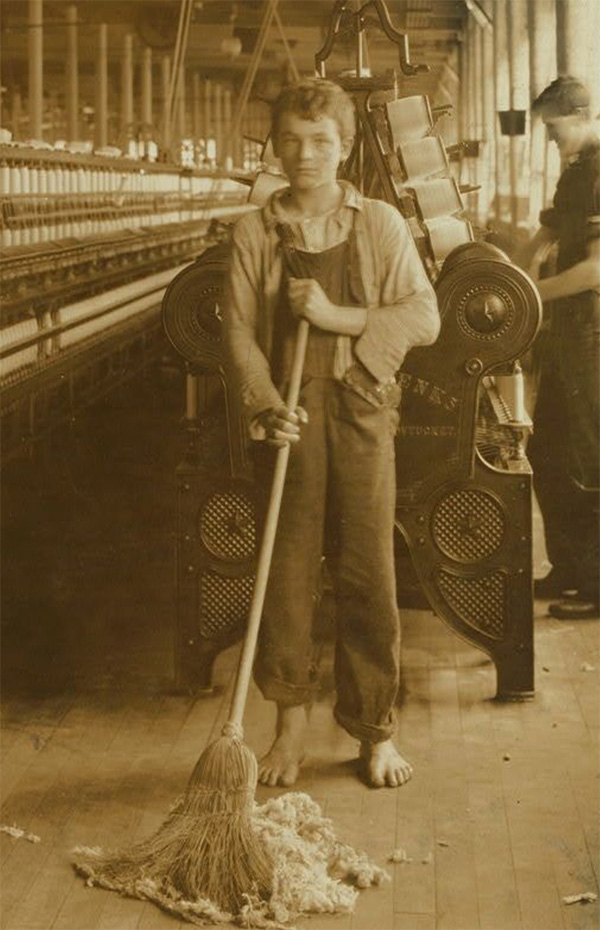
Sweepers
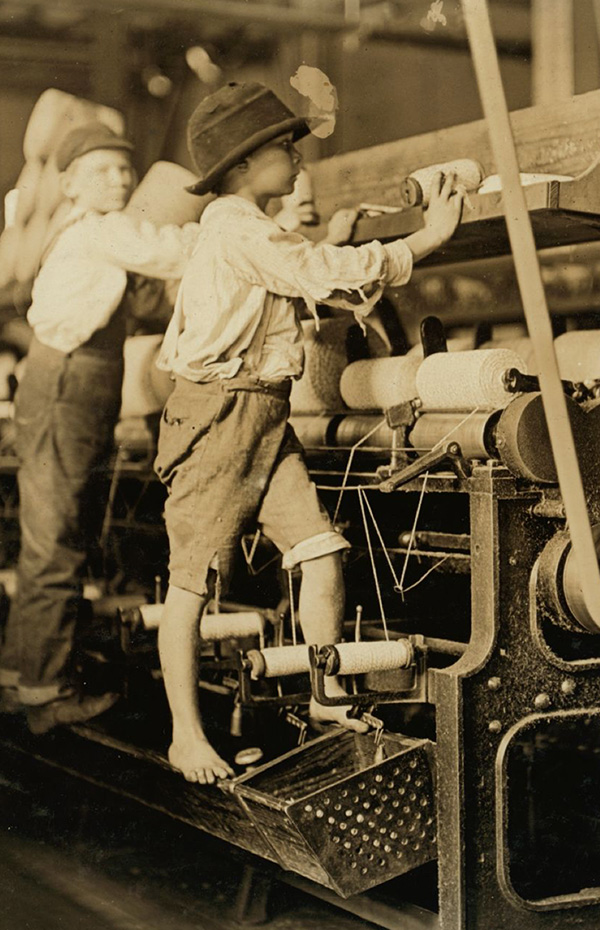
Quillers
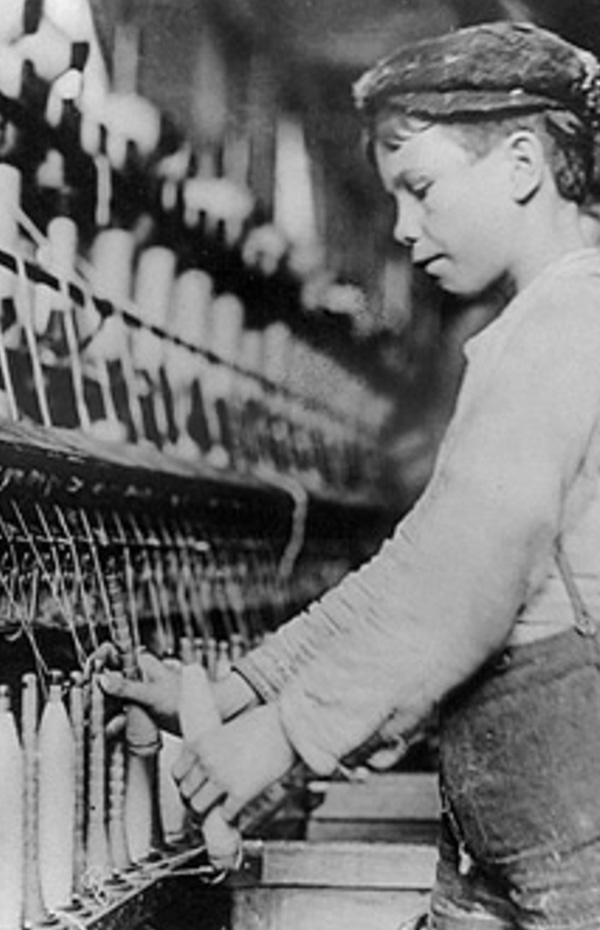
Doffers
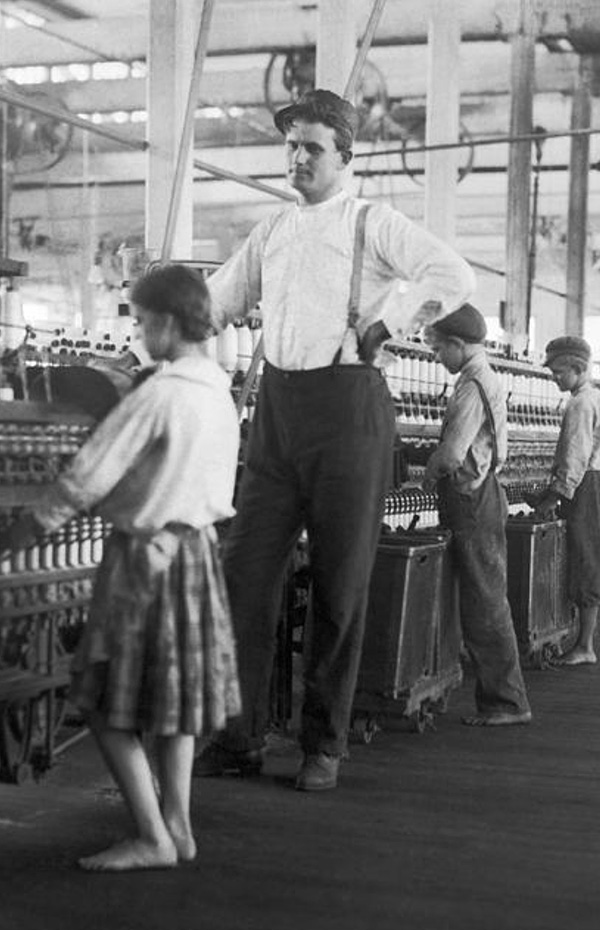
Spinners
Why Were Kids Working?
They lived in poverty.
In 1890, only 45% of American workers earned a yearly income above the poverty level. The average worker earned only about $13/ week leaving many families unable to afford the costs of raising a child. This meant that even the smallest amount of help that a child’s salary offered was welcome.
There was the Puritan Mindset.
Puritanism began as a movement within the Church of England in the 16th and 17th centuries. Hard work and industriousness were stressed as pillars of their faith. Children were required to do some form of learning or activity all day to avoid being idle. The idea was that as long as children were working, they were contributing to social welfare and learning useful skills that could benefit the entire community. Mill and factory owners even started to feel that they were doing workers a favor by providing useful work for them and their children.
Dangerous Working Conditions
Work as a child was a dangerous affair. Machinery and tools injured nearly three times the number of children as adults. Many lost fingers, hands, or legs through entanglement with machinery, simple miscalculations, or distractions. For those who survived, many carried scars from factory life well into their adulthood.
Child Labor Today
While child labor was a profound issue in the United States before mandatory school attendance laws and labor laws were put in place, today it is less of a concern in this country. Perhaps surprising, it remains a concern in other countries. The US Department of Labor’s Bureau of International Labor Affairs actively monitors proven and suspected child labor across the globe and is working to raise awareness to bring about change. Using the knowledge gained about child labor in textile mills in the 1800s, it is easy to understand the dangers to children in terms of exploitation, injury, and stunted educational development when forced into child labor, even in 2020. While numerous examples of suspected child labor is recorded by the US Department of Labor, this excerpt was published in 2020:
“There are reports that children, mostly boys ages 4-17, are forced to quarry granite in Nigeria. Some children are abducted and trafficked from within Nigeria and from Benin to work in granite quarries and mines in the Federal Capital Territory, as well as the states of Ebonyi, Enugu, Ogun, Oyo, and Osun. Reports from the United Nations (UN) and media indicate that between 5,000 and 6,000 children from Benin alone were forced to work in the granite quarries; multiple government rescue operations identified between 50 and 200 children engaged in this work at a time. The children are forced to work up to 16 hours a day, even when they are sick. Many are forced to work under threat of violence. Children are often forced to sleep outside and are denied food. Reports indicate that children frequently die while working, having been forced to work under extreme conditions.”
This example, like other reports, suggests there is a need for global reform. The US Department of Labor reports that to make improvements, our country needs to work with international organizations to “expand school access to children vulnerable to labor exploitation,” continue investigations, and encourage those countries to enact new laws to expand protections. Interestingly, just like the migrant French Canadians and Irish who came to Maine for mill work, today the US Department of Labor notes that globally, those vulnerable to the worst forms of child labor include “indigenous peoples, migrants, and refugees,” particularly when there are barriers to education.


